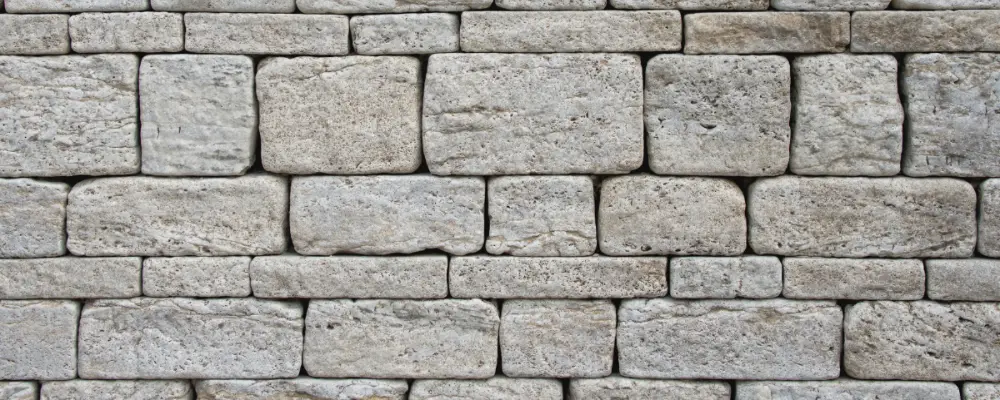Bonding of bricks is the way of arranging bricks in a certain way using cement or lime mortar to build walls, pathways, floors, etc. There are numerous bonds in brick masonry, each with a unique style, purpose, properties, advantages, and disadvantages. Generally, bonds consist of facing headers or stretchers, but raking bonds are laid diagonally and produce a unique aesthetic. Here we take a look at what a raking bond is, its types, pros, cons and applications of the raking bond.
What is Raking Bond in Brick Masonry?
Raking bond is the process of binding the bricks at an inclined angle toward the wall. These bonds are not provided at the successive courses; however, they are built at equal intervals along the height of the wall. These bonds are generally used to build thick walls and are combined with English bonds to increase the longitudinal stability.
Types of Raking Bond
Based on the alignment of the bricks, raking bonds are classified into two types: Diagonal bonds and Herringbone bonds.
Diagonal Bond
In diagonal bonds, bricks are arranged at 45°angles in a way that the extreme corners of the wall remain in contact with the external stretcher lines. Brickbats are cut in a triangular shape to fill the small triangular gaps in the end that align with the stretcher. This bonding is used at a regular vertical interval between every 5th or 7th horizontal course. These bonds are best suitable for walls that are 2 to 4 bricks thick. In every alternate course, the direction of the bond is reversed.
Herring-bone Bond
In a Herringbone bond, the bricks are arranged at a 45°angle in opposite directions from the centre of the wall. These bonds are used in the wall at a regular vertical interval, where the direction of bricks changes in every alternate course. These bonds are widely used for brick paving and decoration purposes.
How to Construct Raking Bonds in Brickwork?
Constructing a Diagonal Bond
- Prepare the mortar by blending cement, sand, or other adhesives with the appropriate amount of water to make it a homogenous mixture suitable for binding the bricks together.
- Prepare the bricks by choosing the right bricks and cutting the brickbats in triangular shapes.
- Put some cement mortar on the level course as a bed to lay the bricks.
- Place the bricks diagonally at a 45°angle and place the brickbats end-to-end touching the stretcher bond in the extreme corners.
- Diagonal bonds are usually used at every fifth or seventh course.
Constructing a Herringbone Bond
- Start by measuring and marking the centre point of the wall where the diagonals need to be reversed.
- Dry lay the bricks to get a clear pattern of the structure.
- Mark and cut the bricks in a triangular shape to fill the gaps.
- Prepare the mortar by blending cement, sand, or other adhesives with the appropriate amount of water to make it a homogenous mixture suitable for binding the bricks together.
- Place the bricks diagonally at a 45°angle until the centre point of the wall and place them in the opposite direction.
- The corner gaps are filled with triangular brickbats and gaps in corners must be filled with mortar.
Applications of Raking Bonds
- Raking bonds are used to create decorative patterns on the wall.
- Herringbone raking bonds are commonly used for building pavements.
- These bonds are mainly used for laying bricks on the floor.
- Raking bonds when associated with English bonds give high thickness and stability to the walls.
Advantages and Disadvantages of Raking Bonds
Advantages
- The raking bonds provide two to four brick wall thicknesses, making it one of the more stable wall types.
- They provide decorative and ornamental finishes to the face of the wall or for brick flooring.
- These bonds provide aesthetically pleasing finishes.
- These bonds don’t need plastering, as the diagonal and herringbone bonds provide good looks and stability.
- They are stable and can withstand for a long time.
Disadvantages
- Construction of raking bonds needs highly skilled labour, as arrangements need to be made carefully.
- These bonds are used only for the construction of non-structural walls due to the strength limitations.
- These bonds are not provided in the successive courses, making their construction complicated.
- Waste can be generated by cutting the triangular brickbats.
Conclusion
A Raking bond is one of the unique methods of laying bricks, which gives aesthetically pleasing finishes. The unique pattern and the structural stability it provides make it one of the preferred construction types, especially when looks are a concern. They can be used with English bonds to give good wall thickness and stability. Although they are aesthetically pleasing, they are not used for structural walls.

